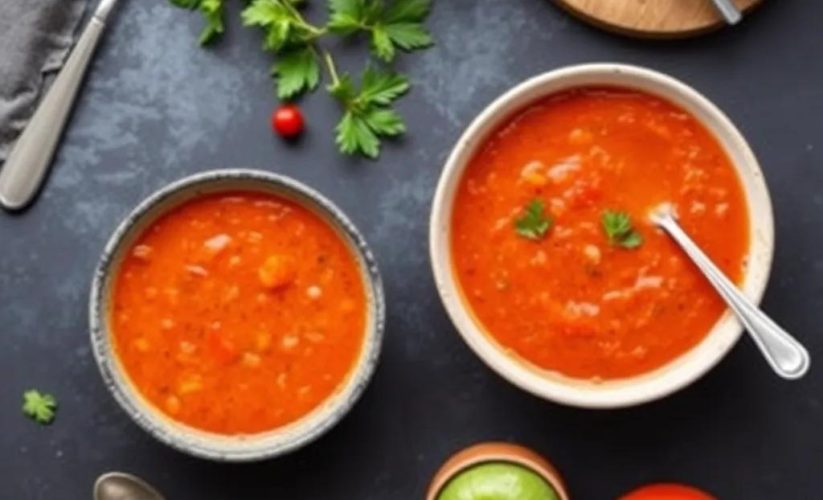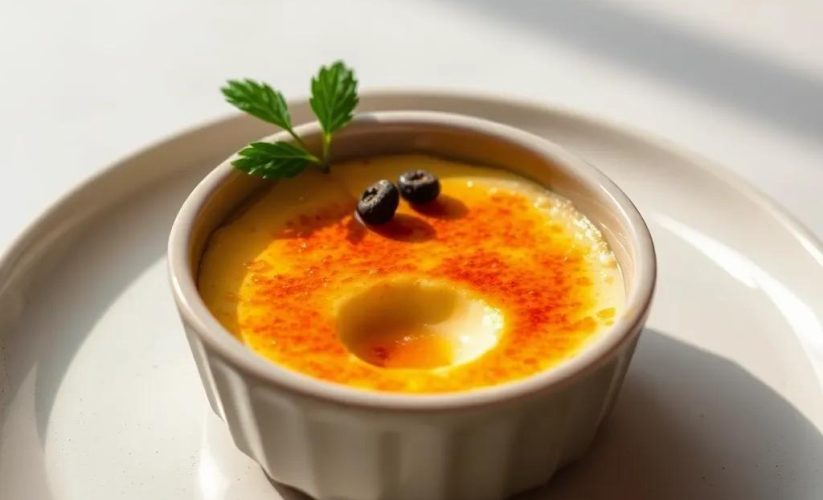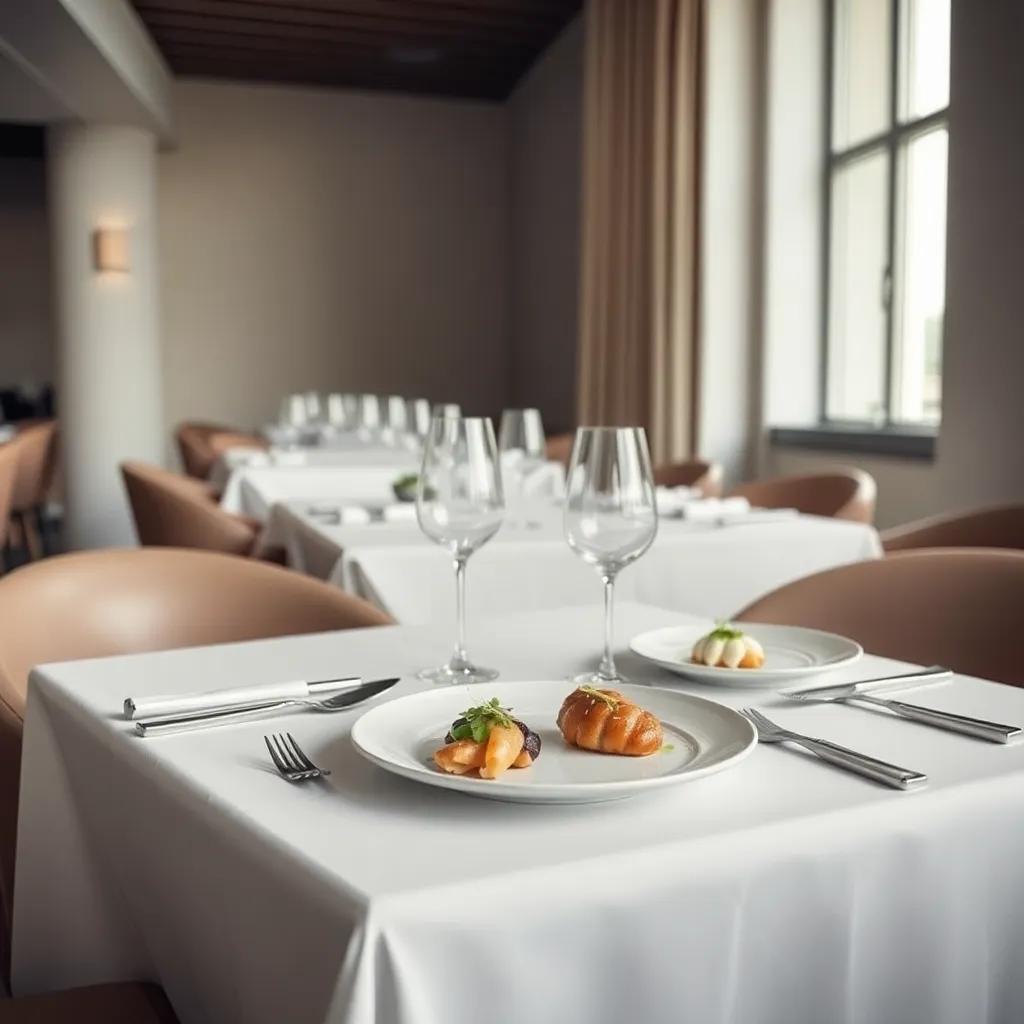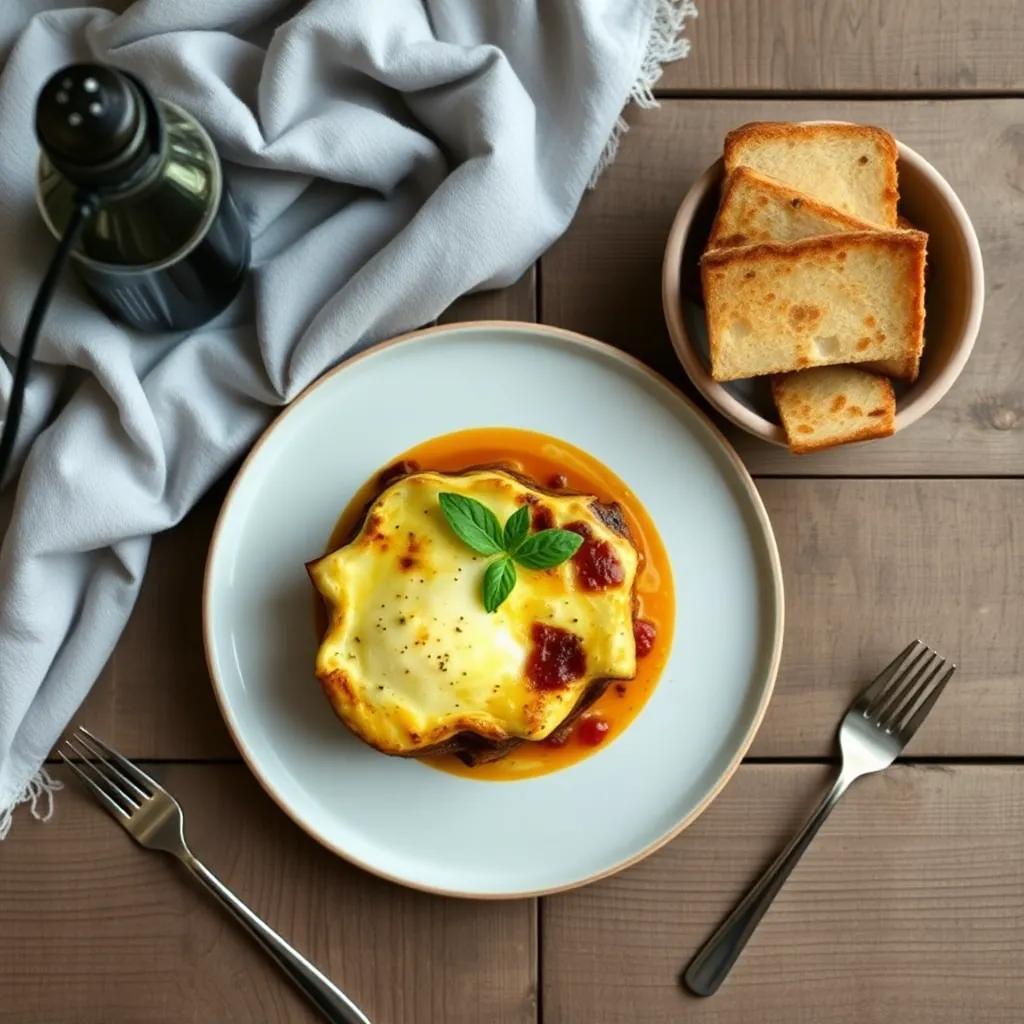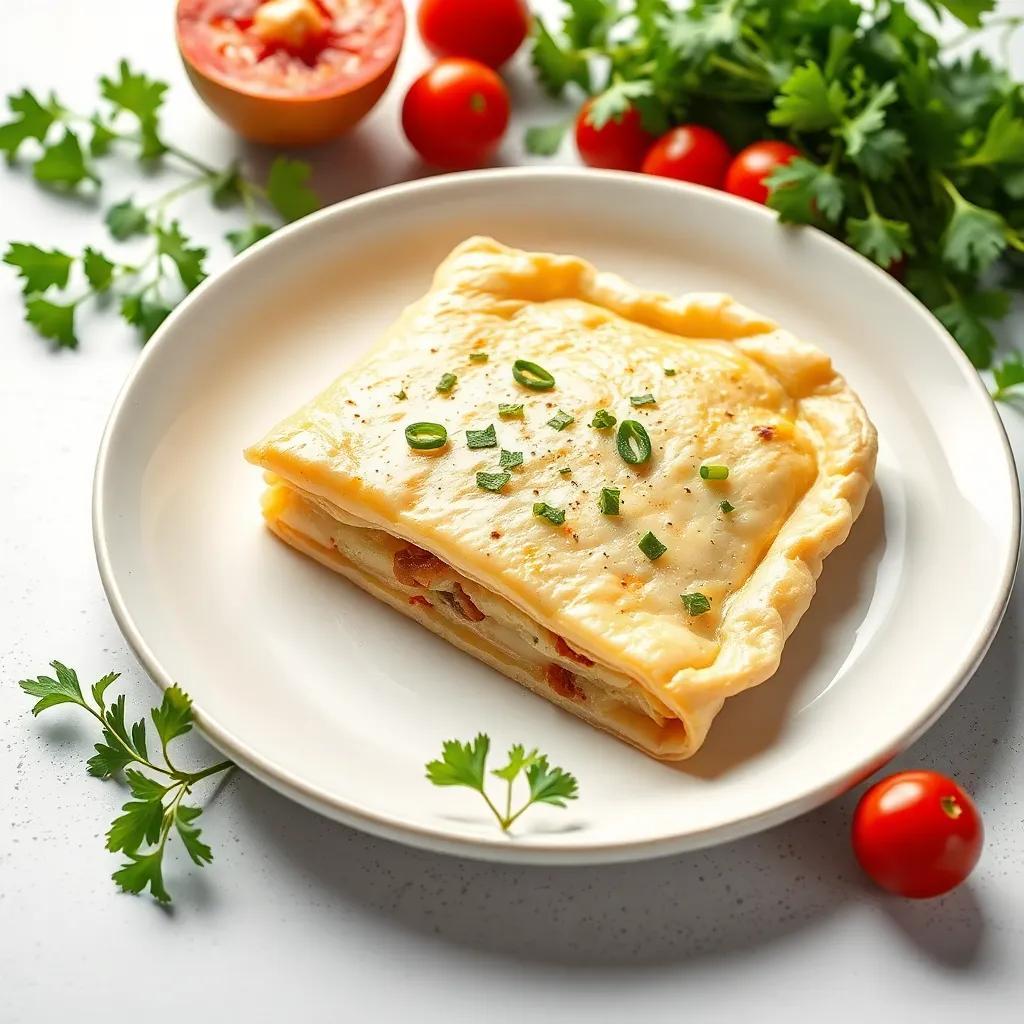Unlock the Secrets of Classic Baklava: Easy, Irresistible Recipe
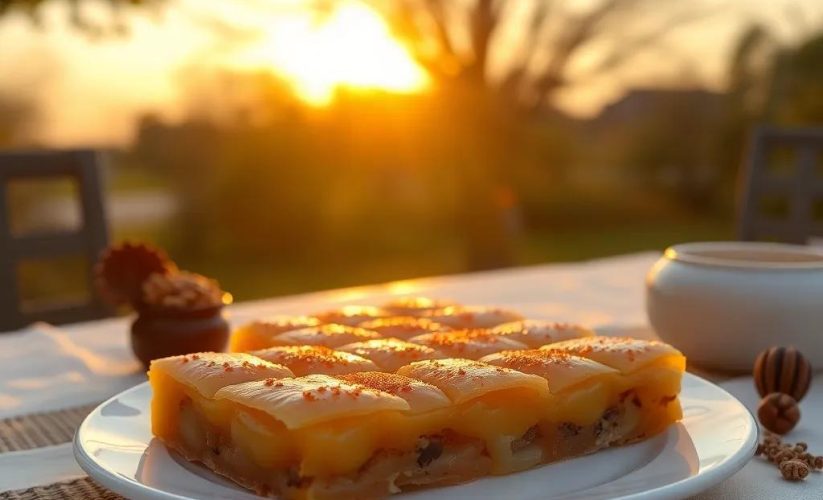
Unlock the Secrets of Classic Baklava: Easy, Irresistible Recipe
🌍 Cuisine: Middle Eastern
⚙️ Difficulty: Medium
Ingredients
Nutrition Facts
320
Instructions
- Preheat your oven to 350°F (175°C).
- Lightly grease a 9×13 inch baking dish with some of the melted butter.
- In a bowl, combine the chopped walnuts, pistachios, and ground cinnamon. Set aside.
- Lay one sheet of phyllo dough in the baking dish and brush generously with melted butter. Repeat layering and brushing with about 8-10 sheets of phyllo, buttering each sheet thoroughly.
- Spread a thin, even layer of the nut mixture over the phyllo layers.
- Continue layering phyllo sheets on top of the nuts, brushing each sheet with butter. Add another nut layer once you have added about 5 layers of phyllo.
- Repeat layering nuts and phyllo until all nuts are used, finishing with about 8-10 layers of phyllo on top, each brushed with butter.
- Using a sharp knife, carefully cut baklava into diamond or square shapes all the way through to the bottom of the dish.
- Bake in the preheated oven for about 50-60 minutes or until the baklava is golden brown and crisp.
- While the baklava is baking, prepare the syrup: In a saucepan, combine sugar, water, honey, lemon juice, and vanilla extract. Bring to a boil, then reduce heat and simmer for around 10 minutes. If using, add rose water or orange blossom water near the end of the simmer.
- Remove the baklava from the oven and immediately pour the hot syrup evenly over the hot baklava, allowing it to soak in.
- Let the baklava cool completely at room temperature for several hours or overnight to absorb the syrup fully.
- Once cooled, serve the baklava pieces and enjoy your sweet, flaky dessert!
Serving Suggestions
- Serve with a cup of strong Turkish coffee or black tea for a traditional experience.
- Garnish with extra chopped pistachios or a sprinkle of ground cinnamon before serving.
- Pair with a dollop of whipped cream or Greek yogurt for a creamy contrast.
- Serve chilled or at room temperature depending on preference.
- Accompany with fresh fruit like figs or pomegranate seeds for a bright flavor contrast.
- Drizzle extra honey or a rosewater syrup over the top for enhanced sweetness.
- Enjoy with a scoop of vanilla ice cream for a decadent twist.
Table of Contents
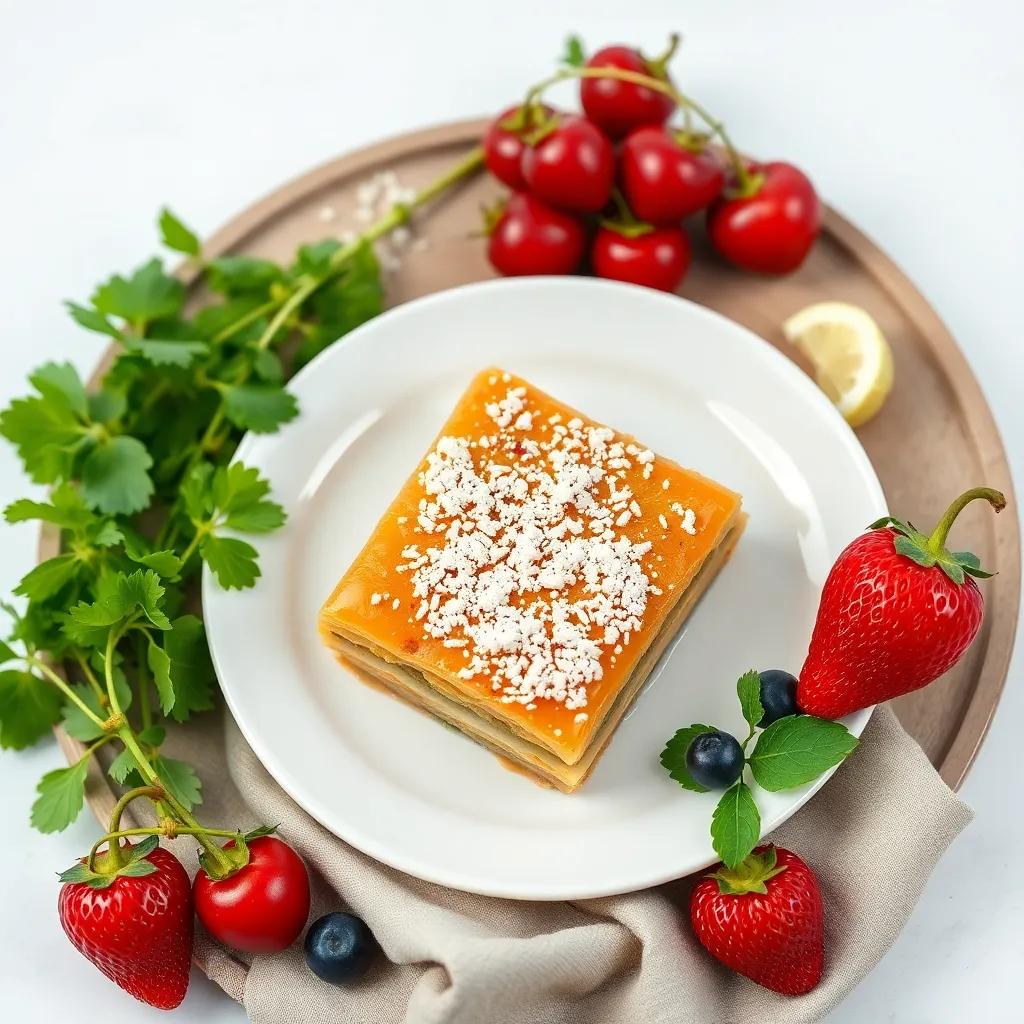
Intro
Few desserts capture the imagination quite like classic baklava. With its golden, flaky layers and a sweet, sticky finish, baklava is a celebration of textures and flavors that’s as timeless as it is tempting. This recipe unlocks the secrets to making baklava that’s both authentic and approachable—even if you’re new to working with delicate phyllo dough or Middle Eastern desserts.
What makes this baklava truly special is how the rich, buttery layers embrace a crunchy, spiced nut filling, all soaked in a fragrant honey syrup that lingers long after the last bite. Despite its seemingly intricate appearance, the process is beautifully straightforward, turning what might seem like a complex treat into an achievable kitchen adventure.
Baklava shines at festive gatherings, holiday feasts, or any moment when you want to impress with a dessert that feels both exotic and comforting. Its versatility means it pairs wonderfully with strong coffee or tea, making it a perfect ending to a leisurely brunch or a celebratory dinner. Whether served room temperature or slightly chilled, every piece invites a small indulgence that transports you to the heart of Middle Eastern culinary tradition—and all from your own oven.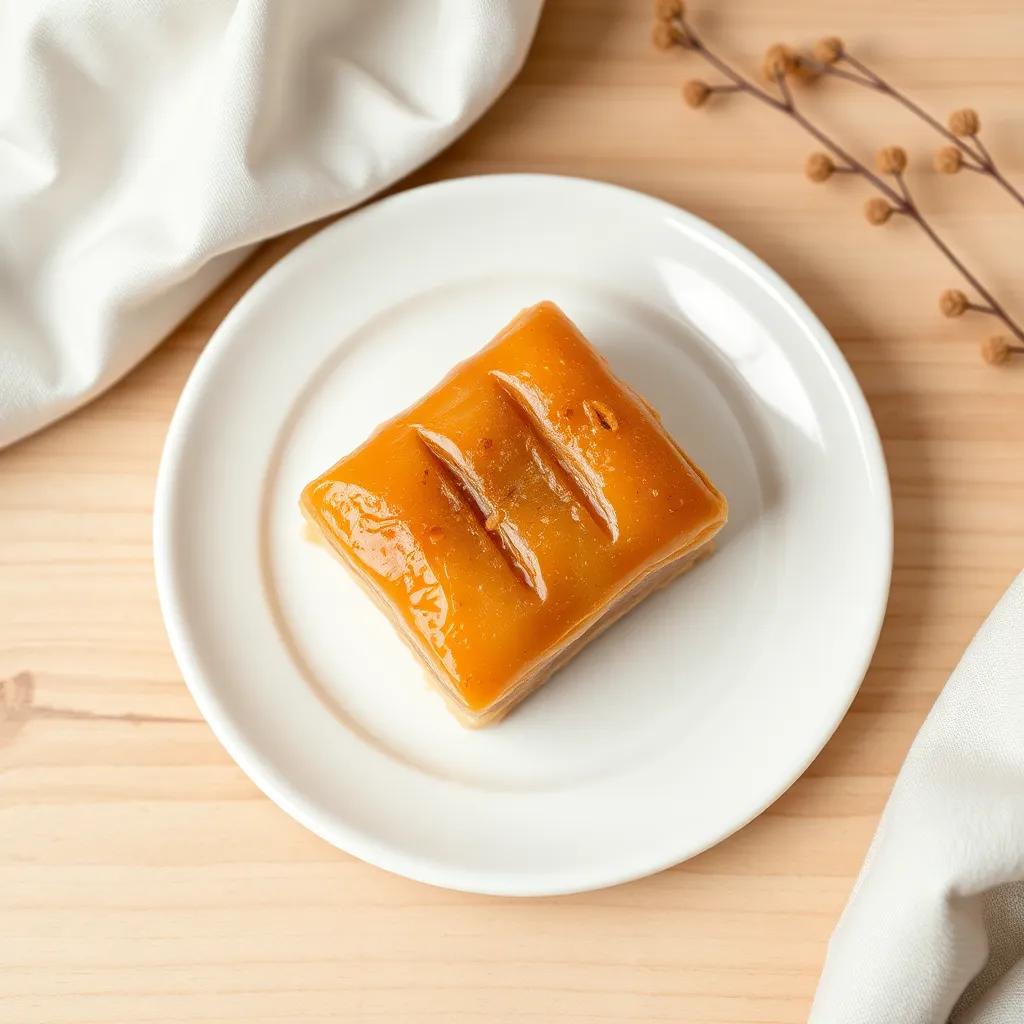
Ingredient Notes
In crafting classic baklava, a few key ingredients play starring roles, each contributing unique qualities that elevate this dessert from simple nuts and pastry to a symphony of flavors and textures.
Phyllo Dough: Often the heart and challenge of baklava, phyllo dough is what creates those signature thin, crispy, golden layers. When buying phyllo, look for fresh or frozen sheets without cracks or drying edges—thawed properly, they become elastic and easy to work with. If fresh phyllo isn’t available, frozen is a reliable alternative; just thaw it slowly in the refrigerator overnight to prevent tearing. For dietary adaptations, gluten-free phyllo options are emerging, though they can be delicate and may require extra care when layering.
Nuts – Walnuts and Pistachios: The nut mixture sets the flavor foundation. Walnuts bring earthy warmth and a satisfying crunch, while pistachios add a rich, buttery quality and vibrant color that makes baklava visually inviting. When selecting nuts, opt for raw and unsalted varieties to control salt and flavor precisely. Toasting them lightly before chopping enhances their aroma and deepens the flavor, giving your baklava an irresistible nuttiness. If you want to experiment, almonds or hazelnuts can work well for a different twist, though the classic blend is hard to beat.
Unsalted Butter: Butter is the invisible binder that gives baklava its luscious, flaky texture. Unsalted butter allows full control over sweetness and salt balance; it should be melted but not hot when brushing to avoid damaging the delicate phyllo. Choosing high-quality butter with a rich, creamy flavor will transform the layers, lending a subtle depth and luxurious mouthfeel. For a dairy-free option, clarified coconut oil or vegan margarine can substitute, but the flavor and texture might shift slightly.
Honey and Aromatic Add-ins (Rose Water or Orange Blossom Water): The syrup is more than sweet glue—it’s the soul of baklava’s character. Honey provides a floral, complex sweetness that pure sugar syrup can’t replicate alone. When purchasing honey, consider varietals like wildflower or orange blossom for nuanced notes that complement the nuts beautifully. The optional addition of rose water or orange blossom water introduces an enchanting fragrance, evoking classic Middle Eastern desserts. These essences are potent, so add sparingly to avoid overpowering the syrup’s balance. If these floral waters aren’t available, a touch of vanilla extract, as in this recipe, will still impart a warm, inviting aroma.
By selecting quality versions of these ingredients and understanding their roles, you ensure your baklava is not only authentic but truly extraordinary—each bite layered with texture, aroma, and flavor that tell a story beyond the sum of its parts.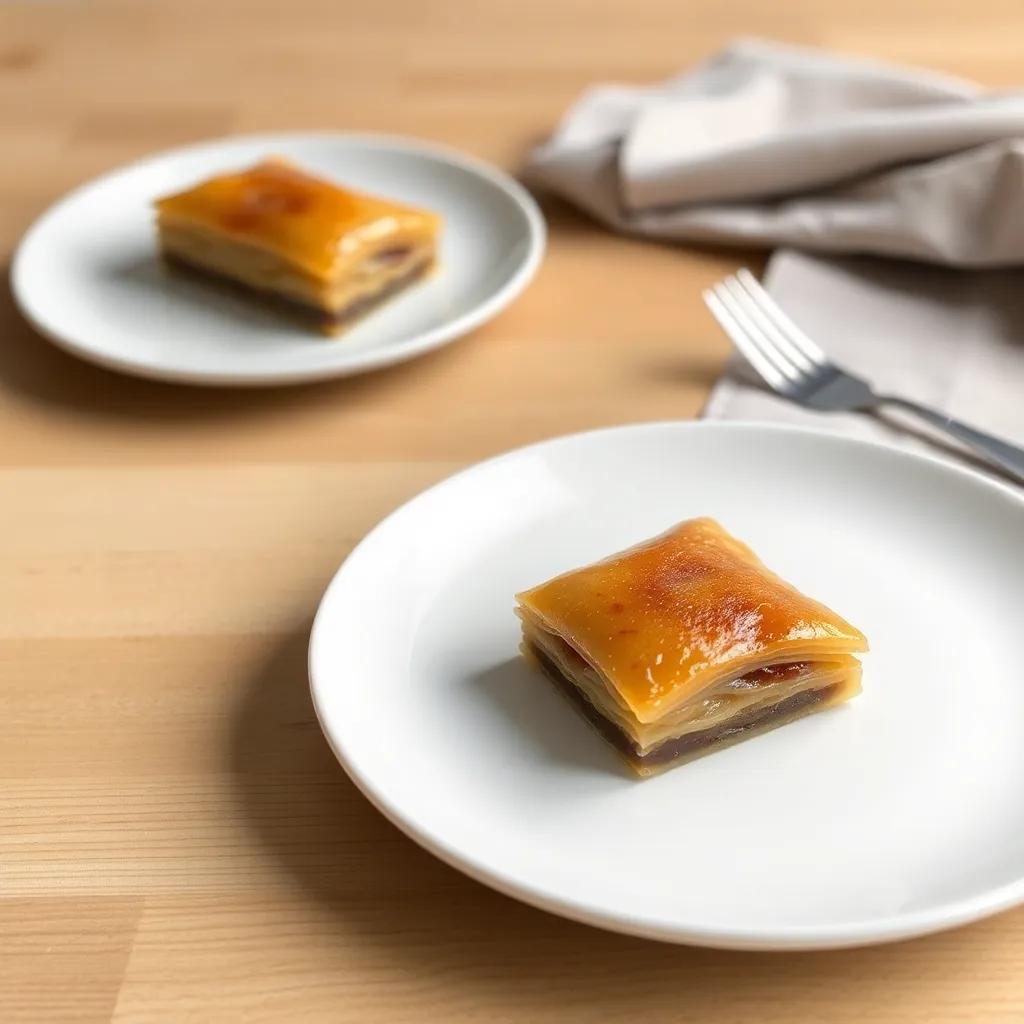
Tips & Variations
Mastering baklava is a joyful journey, and a few expert tips can elevate your creation from simply good to absolutely breathtaking. First, patience is your best friend—take your time layering and buttering each sheet of phyllo. This ensures crisp, flaky layers that don’t become soggy under the syrup. Use a soft pastry brush for even butter application, and don’t skimp on this step; it’s the secret to that signature tender crunch.
For a foolproof cut, score the baklava before baking into your desired shapes—diamonds are traditional, but squares or triangles work just as well. This step ensures clean lines without shattering the fragile pastry once baked. After baking, pouring the hot syrup immediately onto the warm baklava allows it to soak evenly, marrying sweetness with texture.
Customization is where baklava truly shines. Feel free to swap your nut blend—try adding almonds for a sweeter crunch, or hazelnuts for a deeper, more robust flavor. For the adventurous, sprinkling a pinch of ground cardamom or clove into the nut mix adds a subtle, intoxicating warmth. You can even fold finely chopped dried fruits like apricots or dates into the nut mixture for unexpected bursts of chewiness.
Dietary adaptations are not only possible but delicious. Gluten-free baklava is achievable by finding specialty gluten-free phyllo sheets or experimenting with thin rice paper as a base, though handling requires gentle care. To make this recipe vegan, substitute the butter with high-quality coconut oil or a plant-based margarine; note the flavor and layering might be slightly different but no less satisfying. And for those watching sugar intake, reducing the syrup’s honey or sugar levels can work if balanced with longer soaking time, or substitute with all-natural sweeteners like maple syrup for a nuanced twist.
Finally, consider warming your baklava briefly before serving to revive that just-baked feel, or drizzle a bit of fresh lemon zest over the top just before eating to brighten the rich sweetness. Whether sticking to tradition or adding your personal spin, each variation reveals new layers of enjoyment—truly unlocking the endless secrets that baklava holds.
Leftovers & Storage
Storing your classic baklava properly is key to preserving its trademark crispiness and luscious syrup-soaked layers. Since baklava is rich in butter and honey, it holds up nicely when stored, but moisture and air exposure can quickly dull its flaky texture or cause sogginess.
For short-term storage, keep the baklava in an airtight container at room temperature, ideally on a countertop away from direct sunlight, for up to 3 to 4 days. This preserves the crisp phyllo layers while maintaining the syrup’s sweetness. To prevent the pieces from sticking together, arrange them in a single layer or separate layers with parchment paper.
If you want to extend its shelf life, baklava refrigerates well for up to two weeks when sealed tightly in an airtight container. Note that refrigeration may soften the phyllo slightly, so before serving, let it sit at room temperature for about 30 minutes to regain some crispness. For a quick refresh, you can warm individual pieces in a low oven (around 300°F or 150°C) for 5–7 minutes to revive the crisp texture and gently melt the syrup.
Baklava is also freezer-friendly, making it an excellent dessert to meal prep or save for later indulgence. To freeze, place the cooled baklava pieces on a baking sheet lined with parchment paper and flash-freeze them individually for about 1 to 2 hours. Once frozen, transfer them into an airtight, freezer-safe container or heavy-duty zip-top bag. Properly stored, baklava can keep in the freezer for up to 3 months without sacrificing flavor or texture.
When ready to enjoy frozen baklava, thaw it overnight in the refrigerator or at room temperature for a few hours. To re-crisp, warm thawed pieces briefly in an oven preheated to 300°F (150°C) for 5–10 minutes. Avoid microwaving, as it can make the layers soggy.
For on-the-go enjoyment or gifting, baklava travels well in sturdy containers with dividers or parchment paper between layers to prevent sticking and breakage. Just be mindful to keep it out of direct heat or sunlight during transit.
By following these storage tips, you can savor your irresistible homemade baklava for days or weeks, sharing its sweet, flaky magic well beyond the moment it first comes out of the oven.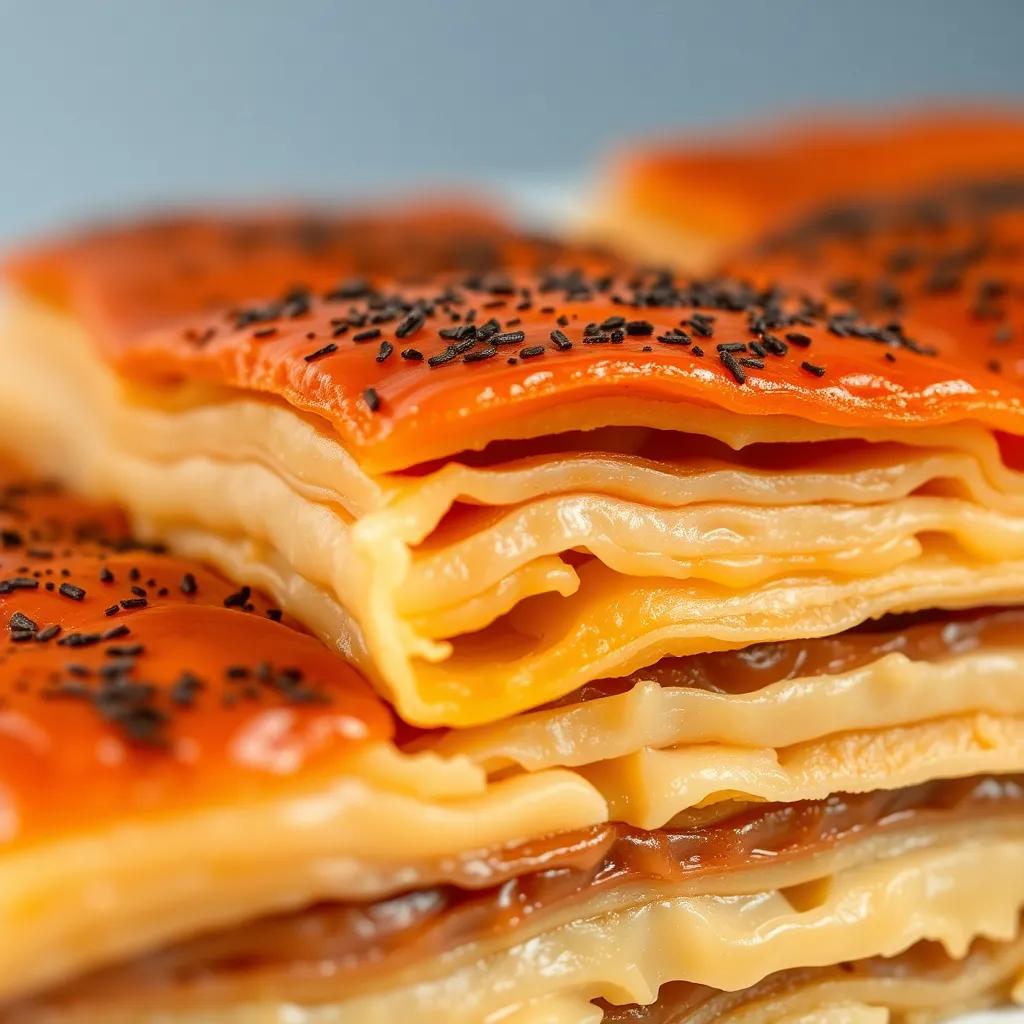
Behind the Recipe
Baklava carries with it a rich tapestry woven from centuries of Middle Eastern and Mediterranean history, embodying the spirit of celebration and hospitality that defines the region. This iconic dessert is said to have roots tracing back to the Ottoman Empire, where its delicate layers and fragrant syrup symbolized luxury and the artful blending of simple ingredients into something truly magnificent. Each flaky sheet and nutty bite whispers tales of shared feasts, festive gatherings, and family traditions passed down through generations.
For many, baklava isn’t just food—it’s an experience that transcends cultures and time. Personally, encountering baklava first at a lively family wedding opened my eyes to the power of dessert as a connector. The communal cutting and eager sharing of those honey-soaked diamonds sparked conversations and smiles that lingered long after the last crumb was gone. That moment revealed why baklava has endured: it’s a delicious expression of warmth, togetherness, and the joy found in patience and craft.
This recipe aims to honor that legacy by simplifying the process without losing the soul of baklava. By using accessible ingredients and straightforward steps, it invites home bakers to become part of an age-old tradition—one where the “secret” isn’t just in the recipe, but in the care and love folded into every layer. Unlocking baklava means more than mastering technique; it means savoring a sweet slice of history and sharing a timeless delight with those around you.
FAQ
Can I make baklava ahead of time, and how should I store it?
What can I substitute if I don’t have walnuts for the filling?
Is there a way to make baklava vegan-friendly?
How do I reheat baklava without losing its crispiness?
Can I freeze baklava, and what’s the best way to thaw it?
Is it necessary to use phyllo dough, or can I try a different pastry?
Try It Yourself
Unlocking the secrets of classic baklava reveals more than just layers of flaky pastry and sweet, nutty goodness—it’s a journey into a timeless tradition that’s as satisfying to make as it is to eat. This easy, irresistible recipe invites you to bring a little warmth and sweetness into your kitchen, creating moments that are as memorable as the dessert itself.
We’d love to hear how your baklava turns out! Feel free to leave a comment, rate the recipe, or share your own special twist—after all, every baklava has its own story, and yours might just inspire the next sweet adventure. Happy baking!

